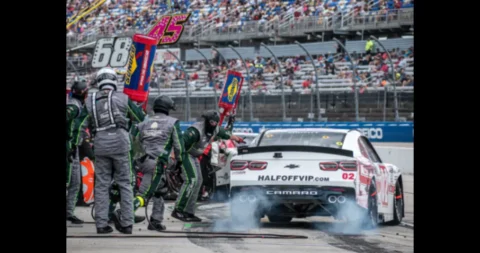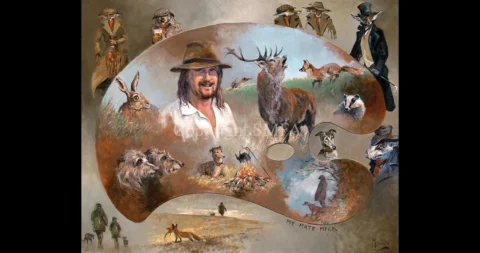Music is an intricate dance of rhythm, harmony, and melody—and at the heart of many powerful compositions lies a partnership that’s often overlooked but absolutely essential: the interplay between bass with guitar. These two stringed instruments, though differing in tone, range, and function, form the backbone of countless musical genres. Whether it’s the growling low-end of a bass anchoring a groove or the melodic shimmer of a guitar riff soaring above it, the magic truly happens when the two work in harmony.
In this in-depth article, we’ll explore the multifaceted relationship between bass and guitar—how they complement each other, how to play them together effectively, the nuances of tone, technique, and the historical and genre-specific evolution of this iconic combo. Whether you’re a beginner musician or an experienced producer, understanding how bass and guitar coexist will elevate your music to new heights.
1. Understanding the bass with guitar
Before we get into the practical aspects, it’s important to understand the fundamental roles of bass and guitar in a musical arrangement.
The Guitar: Melody, Harmony, Texture
Bass with guitar is typically tuned in the standard E-A-D-G-B-E format and occupies a mid-to-high frequency range. It’s incredibly versatile—used for strumming chords, picking melodies, fingerstyle playing, and even percussive slapping. The guitar often takes on the role of the lead melodic instrument, but it also provides rhythmic and harmonic support.
Key functions of the guitar:
- Chord progression support
- Melodic phrasing
- Riffs and licks
- Rhythmic comping
The Bass: Rhythm, Groove, Foundation
The bass guitar (usually tuned E-A-D-G, an octave lower than the lowest four strings of a guitar) provides the low-frequency anchor of a track. Its job is less about standing out and more about gluing everything together—it connects the rhythm (often provided by the drums) with the harmonic structure (usually handled by the guitar or keys).
Key functions of the bass:
- Groove and pulse
- Root note reinforcement
- Rhythmic lock with the drums
- Counterpoint to melodic lines
Together, bass and guitar form a complementary relationship—one that defines the groove, mood, and movement of a piece.
2. The Tonal Relationship Between Bass and Guitar
Bass and guitar may share the same string names and tuning pattern, but the difference in octave and timbre creates a distinct separation that allows them to coexist without clashing.
Frequency Range
- Guitar: ~80 Hz to 1,200 Hz (extends higher with harmonics)
- Bass: ~40 Hz to 400 Hz (mostly low-end focused)
When played correctly, the bass sits beneath the guitar in the mix, providing body and depth. A muddy mix often results from poor EQ balance between the two instruments, so producers and players need to respect each other’s sonic space.
Tone Crafting Tips:
- Use EQ cuts to remove clashing frequencies (e.g., cut 200 Hz on guitar, boost on bass)
- Apply compression to tame dynamics, especially in funk or pop
- Use stereo panning and reverb carefully—bass is typically mono; guitar can be widened
3. Playing Bass with Guitar: Techniques and Tips
Whether you’re performing live in a band or recording at home, playing bass and guitar together effectively is both an art and a science. Here are some core techniques and philosophies:
A. Rhythmic Lock-In
The bass should lock with the kick drum, but it also needs to groove with the guitar’s rhythm. One of the best ways to make bass and guitar work together is to mirror or complement each other’s rhythms.
- Use syncopation to add interest (e.g., bass offbeats complementing guitar downbeats)
- Employ unison riffs (playing the same rhythm or notes) for heavy, driving sections
- Leave space for each other—don’t overplay
B. Harmonic Anchoring
Guitarists often change chords frequently. A good bassist listens closely and roots each chord change, often playing the root note or exploring other chord tones like the 5th, 7th, or even passing tones.
- If a guitarist plays a Cmaj7 chord, the bassist could explore C, E, G, B
- Don’t always stick to root notes—use arpeggios to follow harmonic movement
C. Counterpoint and Melody
Though less common in rock, counterpoint playing can be very expressive. Bassists can create melodic counterlines to a bass with guitar chord progression, and guitarists can respond with lead lines that “answer” the bass.
- This is a popular technique in jazz, fusion, and prog rock
- Try call-and-response phrases between bass and guitar
4. Genre-Specific Bass and Guitar Pairings
Different genres treat bass and guitar uniquely. Here’s a breakdown of how they interact across various musical styles:
Rock
- Bass: Often simple, driving, locked to the kick drum
- Guitar: Power chords, riffs, solos
- Example: AC/DC – Angus Young’s guitar solos ride Malcolm Young’s tight rhythm, with the bass locking into the groove
Previous article; How to Play World War Heroes on PC A Complete Guide
Funk
- Bass: Slap and pop techniques, syncopated grooves
- Guitar: Staccato chords, wah effects, rhythm-focused
- Example: James Brown – Guitar and bass are both rhythmic instruments in the groove machine
Jazz
- Bass: Walking lines, upright or fretless
- Guitar: Chord voicings, comping, melodic improvisation
- Example: Wes Montgomery – Smooth guitar melodies over upright bass walking lines
Metal
- Bass: Often mimics guitar riffs but thicker and darker
- Guitar: High-gain distortion, speed riffs, solos
- Example: Metallica – Guitar and bass often play in unison for heaviness
Pop
- Bass: Synth or electric, simple and catchy
- Guitar: Clean, rhythmic strumming, arpeggios
- Example: Dua Lipa – Bass drives the groove while guitar adds sparkle
5. Recording bass with guitar
In the studio, capturing the magic of bass and guitar requires attention to arrangement, EQ, effects, and placement.
Recording Tips:
- Record bass first to lock in the groove
- Layer multiple guitar tracks (rhythm left/right, lead center)
- Use DI and amp signals for bass for flexibility
- Use reverb sparingly on bass to avoid muddiness
Mixing Tips:
- Use sidechain compression between kick and bass
- Carve out a midrange pocket for guitar (~1k–4k)
- Don’t boost low-end on both instruments
6. Live Performance Dynamics
On stage, the interaction between bass and guitar is even more visceral. They not only complement each other sonically but visually and energetically too.
Tips for Playing Live:
- Stay aware of each other’s timing and phrasing
- Use in-ear monitors or stage amps to hear each other clearly
- Communicate with eye contact and body language
- Coordinate dynamic shifts (e.g., both dropping out for a breakdown)
The tightness of your performance comes down to practice and chemistry. Bands like Red Hot Chili Peppers or Led Zeppelin shine because of the tight lock between their guitarists and bassists.
7. Composing with Bass and Guitar
When writing music, consider both parts from the start. Don’t treat the bass as an afterthought—it’s just as melodic and expressive as guitar.
Songwriting Tips:
- Start with bass grooves instead of chord progressions
- Build guitar riffs around the bass rhythm
- Use modal interplay—e.g., bass in Dorian, guitar in Aeolian
- Create layered textures (e.g., fingerpicked guitar over ambient bass swells)
The best songs feature interplay—not just two instruments doing their own thing, but communicating like a conversation.
8. Unique Approaches and Gear
Many musicians take innovative approaches to using both bass and guitar in creative ways.
A. Double-Neck Instruments
Think Jimmy Page or Don Felder—guitarists who used double-neck guitars, one neck tuned to standard guitar, the other to bass or 12-string guitar.
B. Looping Pedals
Artists like Reggie Watts or KT Tunstall use live-looping to build full-band textures using bass and guitar loops layered on top of each other.
C. Alternate Tunings
Drop D, DADGAD, or open tunings bass with guitar can mesh interestingly with alternate tunings on bass like drop C or BEAD.
9. Famous Guitar and Bass Pairings
Let’s not forget the legendary duos who showcased what bass and guitar can achieve together:
- Geddy Lee & Alex Lifeson (Rush) – Intricate prog rock interplay
- John Paul Jones & Jimmy Page (Led Zeppelin) – Blues-rooted riffs with powerful grooves
- Flea & John Frusciante (Red Hot Chili Peppers) – Funk-infused chemistry
- Paul McCartney & George Harrison (The Beatles) – Melodic bass under iconic guitar leads
10. Final Thoughts
While they serve different functions, bass with guitar are two sides of the same coin. Their relationship is one of contrast and complement, of foundation and flourish. Learning how to make them work together—whether you’re a producer, performer, or songwriter—opens up new sonic landscapes.
When the bass supports and the guitar expresses, when the groove meets the melody, the result is music that moves both body and soul.









